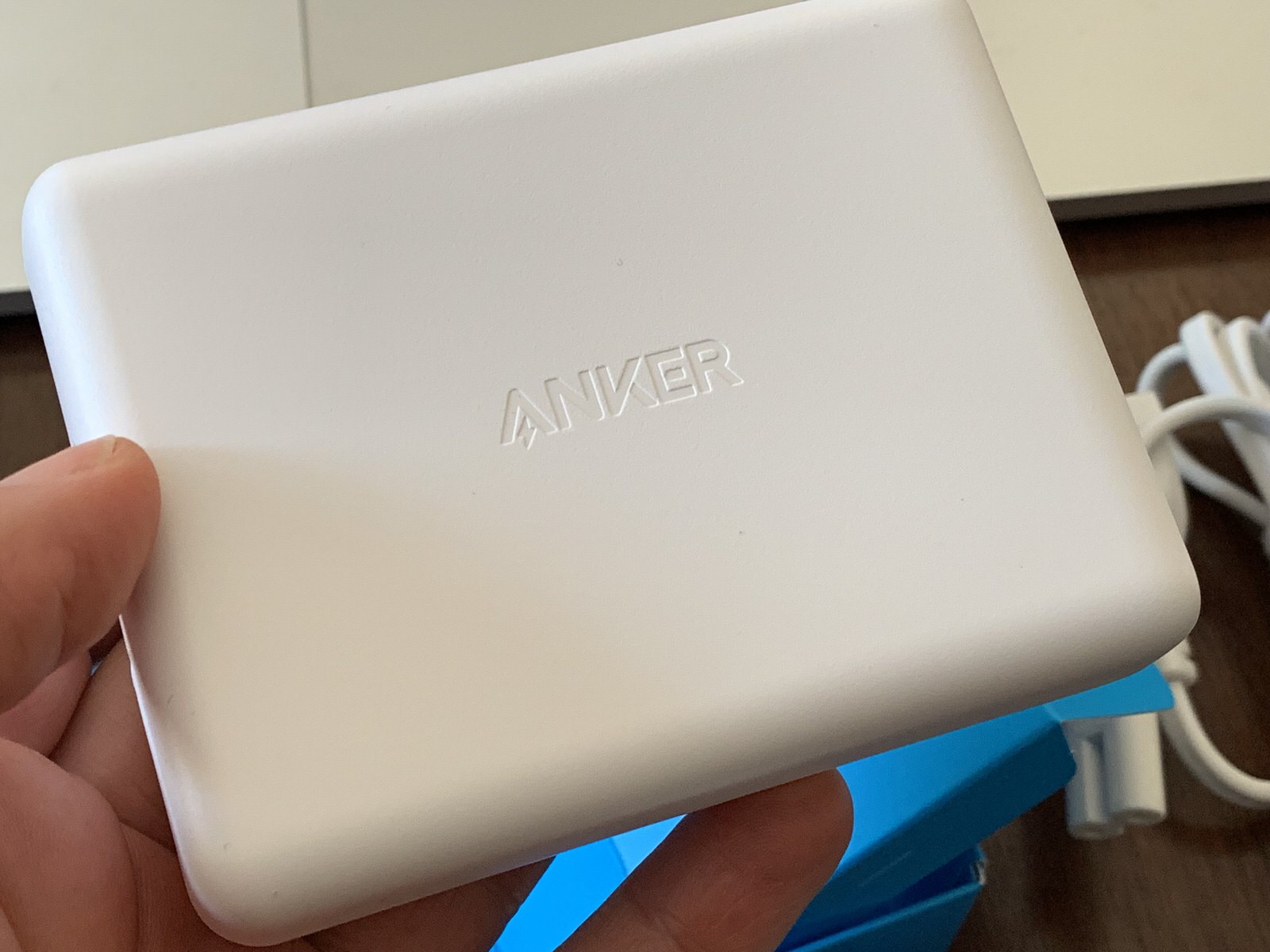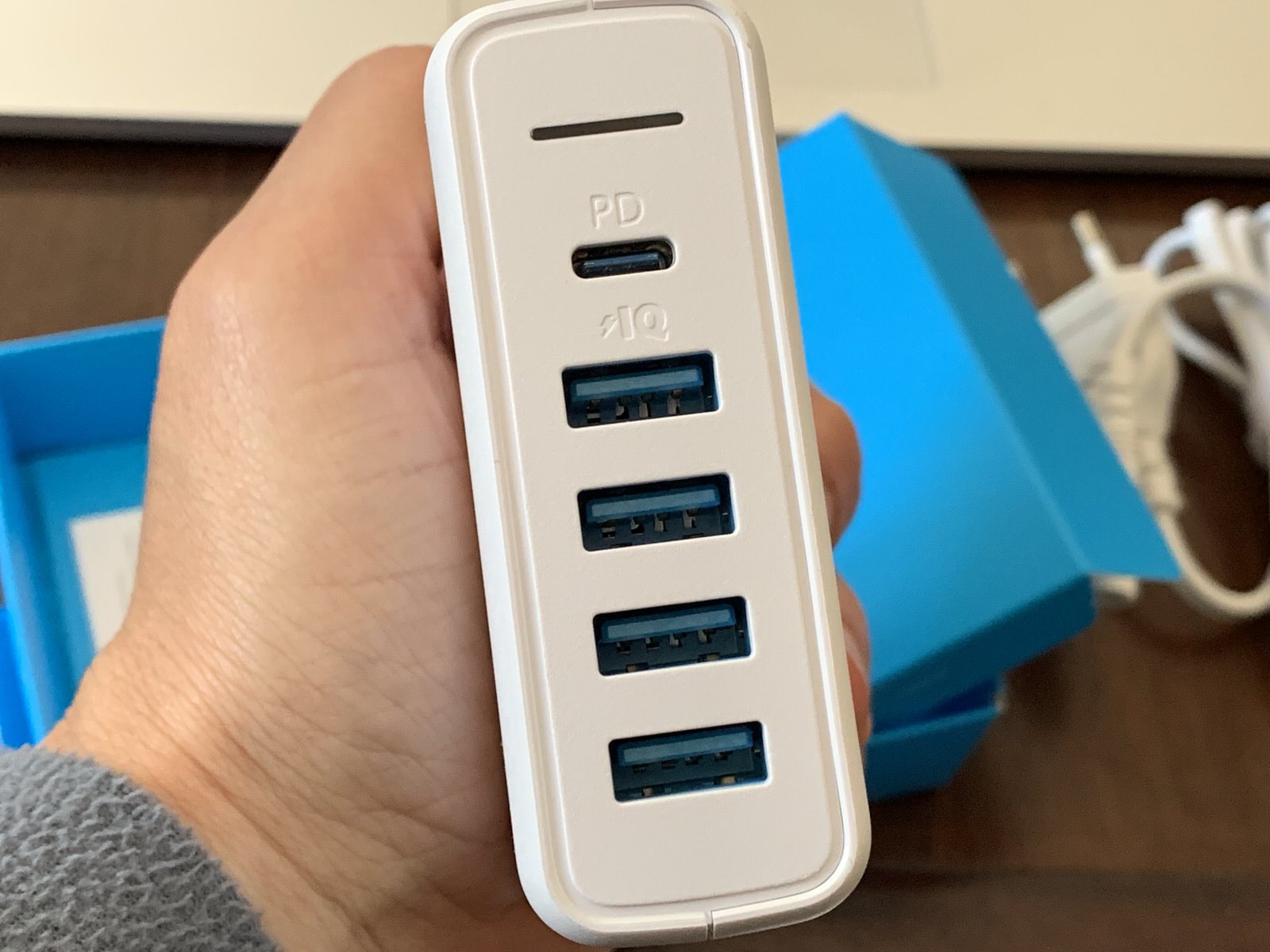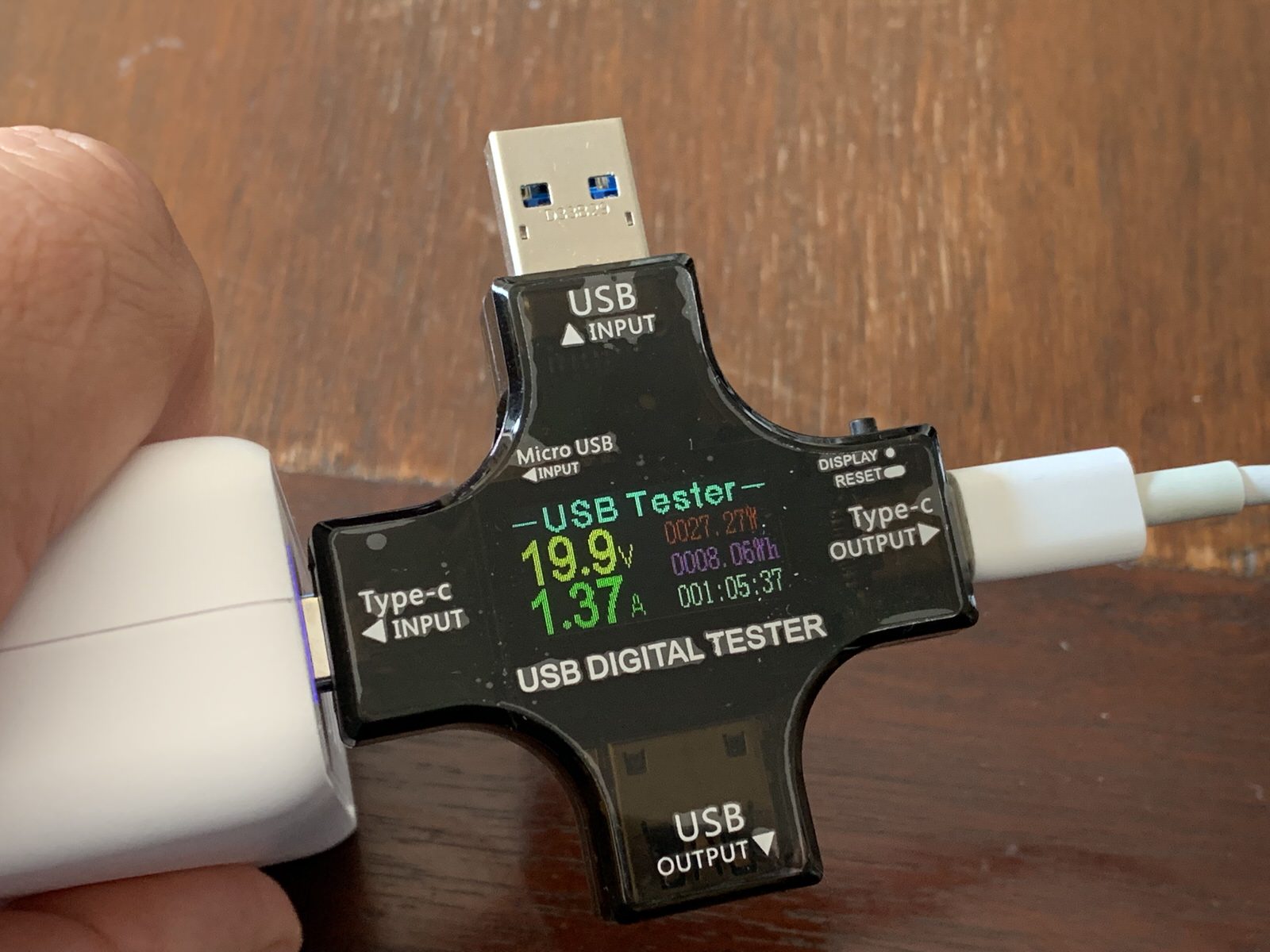The perfect charger does not exist, since the specific needs of each are different from each other, but probably the Anker PowerPort + is very close to the ideal scenario. This accessory, which we have tried in recent days, is quite demanding from the point of view of dimensions, but is designed to be a real travel charging “control unit”.
It is made of excellent quality and scratch-resistant plastic, equipped with a blue LED to signal operation, it is supplied with a 90cm long cable (not abundant, but sufficient to reach a socket from the desk or the bedside table) equipped with a bipolar plug and a velcro strip to collect the cable itself. In the package you will also find a double-sided adhesive tape to fix the charger on the top or the side of the desk. 
Technically it stands out for a couple of fundamental elements: a 30W USB-C port, enough to charge the latest generation iPhone and iPad at high speed or a MacBook Retina 12 ″ and the fact that this port is combined with 4 USB-2 ports with sufficient performance to recharge the world of accessories compatible with this technology at standard speed (2A). In our test, the PowerPort + kept all the promises of the technical specifications.
In particular, it was able to supply our MacBook Retina 12 ″ with all the energy it needs to recharge while running. Recall that this computer, like many others of its size that use a USB-C port, requires 28W to charge and operate simultaneously. After all, the same charger that Apple includes in its package offers a 30W output. With this performance the charger is also able to charge last fall's iPad Pro at great speed which, thanks to their USB-C port, can draw up to 35W peak. Thanks to that Anker's PowerPort + is far superior to the 18W charger that Apple includes in the box.

The Anker charger is also ideal for charging the new generation iPhones to their fullest potential, from the iPhone 8 upwards. As known these phones can draw up to 18W and the Anker charger does exactly this, obviously through the USB-C port and using a USB-C cable on Lightning like this one (or this one from Apple which costs significantly more).
Obviously the performance on USB-C is the same with non-Apple devices that support PowerDelivery technology and have an absorption up to 30W.
 Tested with a MacBook Retina 12 ″
Tested with a MacBook Retina 12 ″
As mentioned, however, this charger also stands out for having 4 USB-2 ports with traditional capacity. What does it mean? That you can recharge any device compatible with USB-2 charging to its full potential: up to 10W if it is an iPhone or an old Android, or any other accessory (such as batteries, headphones, earphones, Bluetooth keyboards) …) With these specifications. If you connect it to an iPad it will recharge it at 2.4A even if there is an exception: for the latest iPad Pro of 2018 it is mandatory to use the Type-C port if you want to have a good charging speed. This latest version of the tablet does not support the 2.4A (12W) lower profile like the previous ones, but it will recharge at 7.5W, so slower than an older generation iPhone.
A second limit should also be noted. Anker's PowerPort + is capable of providing a total of 60W. If you've connected an iPhone 8, iPhone X, XR, or XS to the USB-C port, you don't need to worry too much as you'll be left with the other four 10.5W USB-2 ports for each. But if you have connected an iPad Pro 2018, or a MacBook 12 Retina, you will only have 7.5W left for each of the four ports. By connecting to them an iPhone or an iPad or some other phone that recharges 2 or 2.4W you will therefore have lower performance than you will get from a cheap charger. In fact, since the typical scenario of using this charger involves a device being charged via USB-C, a couple of smartphones connected to the USB-2 ports and other accessories (such as headphones or Bluetooth devices) with low absorption connected to the two ports, which therefore they absorb less than 7.5W, we do not seem to be facing a serious problem.
In conclusion, if you need a high-performance charger, able to recharge practically everything you need, the Anker PowerPort + is a very interesting solution. It is probably not ideal for travelers as its size is considerable and its weight equally; in situations of this type perhaps it is better to use a miniaturized USB-C charger (like this one from Anker) or a charger with only one USB-2 and one USB-C port (like this one)
The price is very attractive: 34.99 euros for a 30W USB-C port and 4 high-performance PowerIQ USB-2 ports is a bargain considering what it would cost you to buy two chargers, one with 4 USB-2 ports and a charger. 30W USB-C





